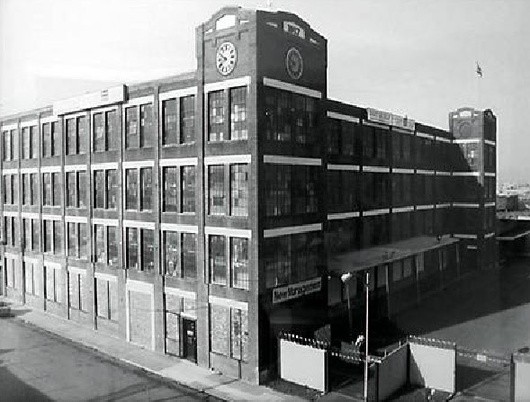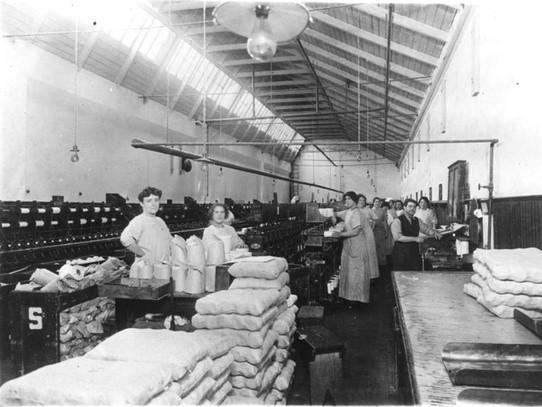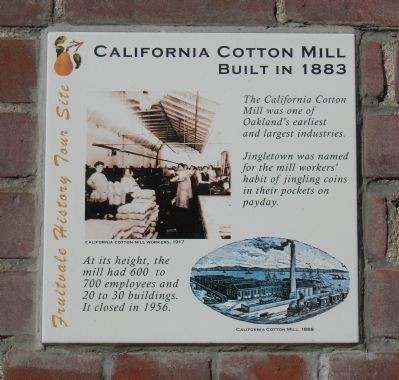California Cotton Mills
Introduction
Text-to-speech Audio
Images
A Black and white shot of the Mill.

A shot of the Mills' workers spinning and packaging cotton.

A plaque commemorating the Mill.

Backstory and Context
Text-to-speech Audio
When it was first constructed, in 1883, the California Cotton Mill was the largest cotton mill to the west of the Mississippi River. Located in the Fruitvale neighbourhood, the building itself was designed by architect A.C. Griewank. During the height of its production, the Mill employed upwards of 1,500 people, mainly immigrants from Portugal who had travelled to the US and settled in the area. They produced a wide array of products including comforters, drapery cloth, table padding, towels and mops.
The building was replaced in 1917 and became a major supplier of tents, parachutes and fabric for the military during both World Wars.By 1954 the Mill had closed down and most of the structure was demolished to make way for the construction of the Nimitz Freeway (I-880).
The main building remains and is now the California Cotton Mills Studios, a collection of 74 work/live studios meant to serve as an "incubator for various enterprises" and add diversity to the mixed-use industrial neighborhood. Today, the building has become a familiar sight to those travelling between Oakland and Alameda.
In 1979, the Mill was designated Oakland Landmark and it is also listed on the National Register of Historic Places.
Cite This Entry
Middleton, Chris . "California Cotton Mills." Clio: Your Guide to History. June 11, 2017. Accessed February 17, 2025. https://theclio.com/entry/41695
Sources
Califronia Cotton Mills. Local Wiki. Accessed June 11, 2017. https://localwiki.org/oakland/California_Cotton_Mills.
Rego, Nilda. Days Gone By: Brick walls lining I-880 through East Oakland are remnants of California Cotton Mills. Mercury News. January 03, 2013. Accessed June 11, 2017. http://www.mercurynews.com/2013/01/03/days-gone-by-brick-walls-lining-i-880-through-east-oakland-are-remnants-of-california-cotton-mills/.
California Cotton Mill. HMDB. Accessed June 11, 2017. https://www.hmdb.org/marker.asp?marker=71211.

